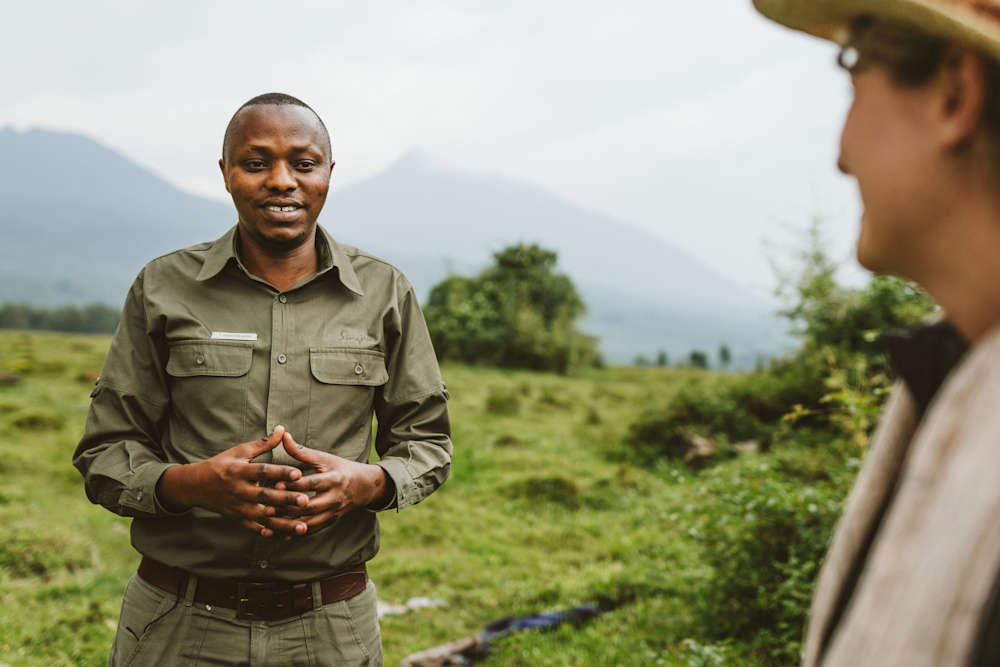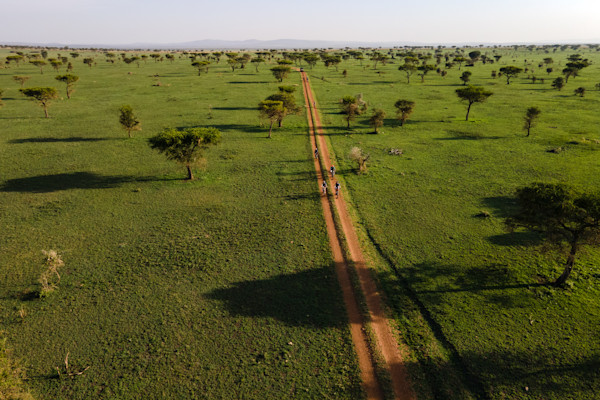
December 2024
Conservation
Experience
People of Singita
Bush wisdom with Saitoti & Robert
in ConservationShare:
Bush wisdom with Saitoti & Robert
Many of our Field Guides, Trackers and Conservationists grew up in the areas surrounding Singita’s lodges – in the nearby communities and farmlands, usually in close proximity to the wilderness. This instilled in them an innate and instinctive knowledge of the land, often since childhood, which connects them to nature in a way that is almost impossible to teach.
For our guests, a day spent learning from these passionate custodians offers a whole world of insight into the wisdom that comes from being truly in tune with nature.

Our Guides, Trackers and Conservationists know the land they work on intimately and impart their knowledge to guests
Abundance all around
A Field Guide in Singita Grumeti, Saitoti Olekuwai is a proud Tanzanian-born Maasai. He grew up in the Ngorongoro Conservation Area, where his future path was shaped by learning to track from his fellow tribesmen and a calling he felt towards conservation. He has been part of the Singita family since 2005. “Every time I see the sunset, and especially after the day of educating guests, it tells me ‘This is the chosen place for your life’.”
A day with Saitoti reveals that a whole world exists in just a few square metres in any direction in the bush. “In this little spot – we haven’t gone far – we started with the beautiful colours and birds. We’ve had a lilac-breasted roller and a Rüppell's long-tailed starling. We have the toilet paper bush here, and the devil’s horsewhip and this beautiful grass that you can eat. There are elephants and buffalo. It’s incredible, there is so much just in this place.”


The wisdom of nature is endless if you know how and where to look
Nature’s endless versatility
Nature has a way of providing – with many plants serving multiple purposes, its resources have no end. Saitoti explains how the Grewia hexamita and Grewia bicolor shrubs have tasty fruit which you can eat. “Apart from its fruit, the locals use it for firewood and for making bows." He then points out another unassuming tree. “We knew from when I was young that you can go and open the tree and find honey there – it's the sweetest honey in this world. It's made by the stingless bees that normally build their hives in these trees."
But he didn't know about its medicinal qualities until he learned about these from the hunters and gatherers. “It was them that taught me about the medicinal use of the bark. And since then, I've been embracing this tree.” Saitoti believes there's value in going back to nature for support. “Out here you might end up needing something natural – this is something we are missing quite a lot now, because we have been modernised.”

Saitoti unpacks the many uses of the plants growing in just a small patch of the savannah
Work that inspires
Robert Mugable, a conservationist at Singita Volcanoes National Park, is a passionate advocate for nature – his knowledge and enthusiasm can’t fail to inspire. Originally a guide for the Rwandan Development Project, a profession he followed his older brother into, Robert’s drive to learn more prompted him to study further. He left this job to pursue a qualification in conservation, specialising in forest ecology. He then returned to wilderness stewardship, this time as part of the team at Kwitonda.
He’s happiest when interacting with guests – which he does with great charisma and enthusiasm on wilderness walks on the Singita Volcanoes National Park property, pointing out plants, and birds, and telling them about the progress that’s been made here. “When I can take guests through our successes and challenges, I feel inspired,” he says.


After he started working, Robert went back to study conservation to learn more about the wilderness in which he works

The forest is coming closer
With 120 plant species on the property now – up from only five when the lodge was built in 2019 – the land bordering the national park is slowly becoming part of the adjoining forest itself. Robert points out that this has had a ripple effect. Where guests have planted trees and work has been done to clear alien species, indigenous plants have now started to naturally spread.
“A very positive thing is that the forest is now also growing by itself. We have planted trees and now nature has taken its course – through us supporting natural regeneration, you now can’t differentiate our property from the forest itself,” he adds.
This has a positive impact on wildlife too. He recounts how a Rwenzori turaco was recently seen close to the lodge. “These birds live in the forest, so to see one come out is amazing. When I see this forest growing, I feel happy – this is something worth showing. Good things are coming.”


